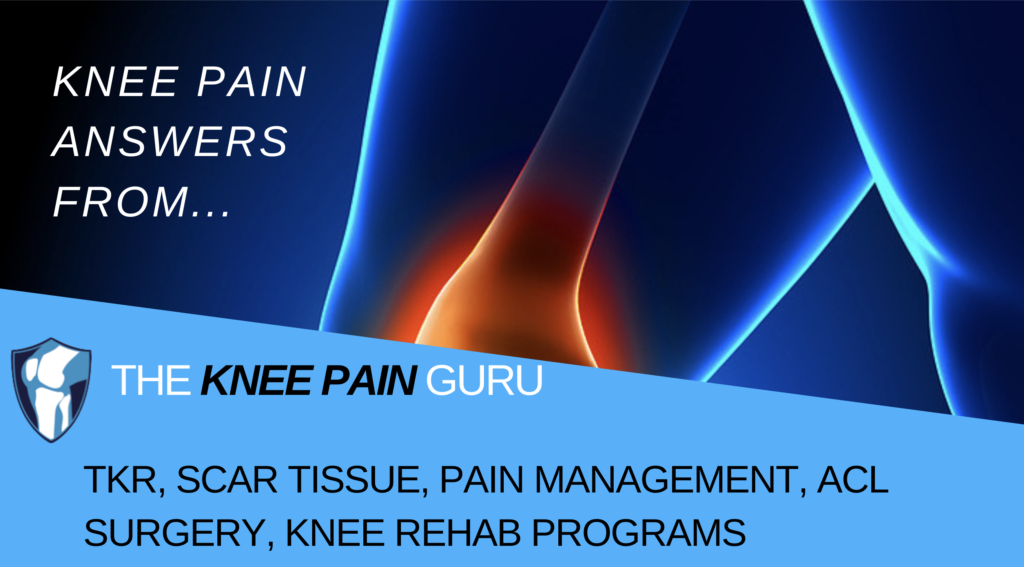Scar Tissue After Tkr

The presence of scar tissue after a Total Knee Replacement (TKR) surgery is a common phenomenon that can affect the overall outcome of the procedure. Also known as arthrofibrosis, this condition is characterized by the formation of excessive scar tissue in the knee joint, which can lead to stiffness, limited range of motion, and pain.
Understanding Scar Tissue Formation
After a TKR surgery, the body’s natural response to injury is to form scar tissue. This process is essential for healing, as it helps to repair damaged tissues and restore joint function. However, in some cases, the body may produce excessive scar tissue, leading to arthrofibrosis. The exact causes of scar tissue formation after TKR are not fully understood, but several factors are thought to contribute to its development, including:
- Genetic predisposition: Some individuals may be more prone to forming scar tissue due to their genetic makeup.
- Surgical technique: The surgical approach used during TKR may influence the formation of scar tissue. For example, a more invasive approach may lead to greater tissue damage and subsequent scar tissue formation.
- Post-operative rehabilitation: Inadequate or overly aggressive rehabilitation exercises may contribute to the development of scar tissue.
- Infection or inflammation: The presence of infection or inflammation in the knee joint may stimulate the production of scar tissue.
Symptoms of Scar Tissue After TKR
The symptoms of scar tissue after TKR can vary in severity and may include:
- Stiffness and limited range of motion: Scar tissue can cause the knee joint to become stiff and difficult to move, making everyday activities challenging.
- Pain and discomfort: The formation of scar tissue can lead to chronic pain and discomfort in the knee joint.
- Swelling and inflammation: The knee joint may become swollen and inflamed due to the presence of scar tissue.
- Clicking or snapping sensations: In some cases, scar tissue can cause clicking or snapping sensations in the knee joint as the scar tissue rubs against surrounding tissues.
Treatment Options for Scar Tissue After TKR
While scar tissue after TKR can be challenging to treat, several options are available to help manage the condition. These include:
- Physical therapy: Gentle stretching and strengthening exercises can help to improve range of motion and reduce stiffness.
- Pain management: Medications such as pain relievers and anti-inflammatory drugs can help to alleviate pain and discomfort.
- Steroid injections: Injecting steroids into the knee joint can help to reduce inflammation and swelling.
- Surgical intervention: In severe cases, surgical intervention may be necessary to remove the scar tissue and improve joint function.
Prevention Strategies
While it is not possible to completely prevent scar tissue formation after TKR, several strategies can help to minimize the risk of developing arthrofibrosis. These include:
- Gentle rehabilitation exercises: Avoiding overly aggressive rehabilitation exercises can help to reduce the risk of scar tissue formation.
- Regular follow-up appointments: Regular follow-up appointments with your healthcare provider can help to identify any potential issues early on.
- Maintaining a healthy weight: Excess weight can put additional stress on the knee joint, increasing the risk of scar tissue formation.
- Avoiding infection: Practicing good hygiene and avoiding infections can help to reduce the risk of scar tissue formation.
Conclusion
Scar tissue after TKR is a common complication that can affect the overall outcome of the procedure. While the exact causes of scar tissue formation are not fully understood, several factors are thought to contribute to its development. By understanding the symptoms, treatment options, and prevention strategies, individuals can take steps to minimize the risk of developing arthrofibrosis and improve their overall quality of life after TKR.
What is the main cause of scar tissue formation after TKR?
+The exact causes of scar tissue formation after TKR are not fully understood, but several factors are thought to contribute to its development, including genetic predisposition, surgical technique, post-operative rehabilitation, and infection or inflammation.
How can I prevent scar tissue formation after TKR?
+While it is not possible to completely prevent scar tissue formation after TKR, several strategies can help to minimize the risk of developing arthrofibrosis, including gentle rehabilitation exercises, regular follow-up appointments, maintaining a healthy weight, and avoiding infection.
What are the symptoms of scar tissue after TKR?
+The symptoms of scar tissue after TKR can include stiffness and limited range of motion, pain and discomfort, swelling and inflammation, and clicking or snapping sensations in the knee joint.
In conclusion, scar tissue after TKR is a common complication that can affect the overall outcome of the procedure. By understanding the causes, symptoms, treatment options, and prevention strategies, individuals can take steps to minimize the risk of developing arthrofibrosis and improve their overall quality of life after TKR. It is essential to work closely with your healthcare provider to develop a personalized treatment plan and prevent any potential complications.

